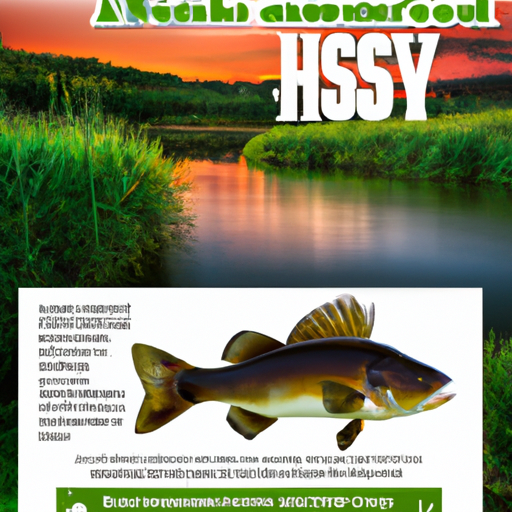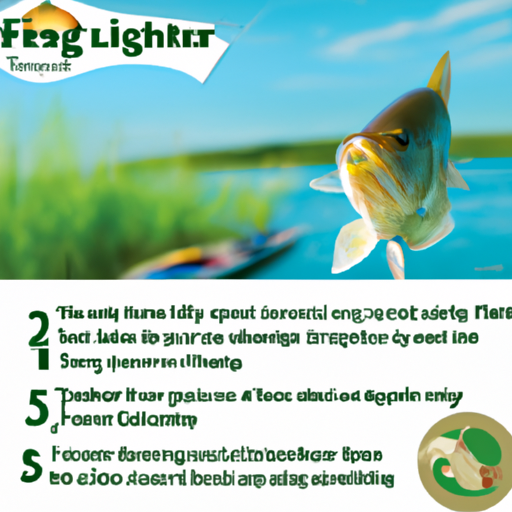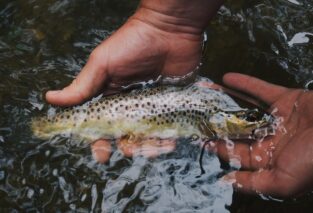You’re ready to embark on your fishing journey, but you’re not quite sure where to start. Look no further than “The Art of Fishing Patience: Tips for New Anglers.” This comprehensive guide is designed specifically for beginners, providing you with invaluable tips and tricks to help you get started in the world of fishing. Whether you’re a complete novice or have dabbled in fishing before, this article will equip you with the knowledge and patience you need to reel in your first catch. So grab your fishing rod, sit back, and prepare to learn the art of fishing patience.
Choosing the Right Fishing Spot
When it comes to fishing, finding the right spot is essential for having a successful and enjoyable experience. Researching local fishing spots will provide you with valuable information such as the types of fish available, fishing regulations in the area, and even the best times to fish. Whether you’re looking for freshwater fishing in lakes or rivers, or prefer saltwater fishing in the open ocean or along the coast, knowing the best spots will greatly increase your chances of reeling in a big catch.
Consider the type of fish you want to catch when choosing your fishing spot. Different fish species prefer different habitats, so it’s important to understand what kind of environment your desired catch thrives in. For example, if you’re aiming to catch trout, look for areas with colder water temperatures and plenty of submerged rocks or logs for them to hide. On the other hand, if you have your sights set on bass, look for areas with vegetation or structures where they tend to congregate.
In addition to considering the type of fish, take into account the time of day and weather conditions. Some fish are more active during specific times of the day, such as early morning or evening, while others may be more active during overcast days. Pay attention to the weather forecast, as changes in weather patterns can significantly affect fish behavior. Windy conditions may make it more difficult to cast, while rain may cause fish to be more active near the surface, making them easier to spot.
Lastly, observe the presence of underwater structures or vegetation when choosing a fishing spot. Fish are attracted to structures such as submerged logs, rocks, or artificial reefs as they offer protection and act as hiding spots. Vegetation, such as water lilies or hydrilla, can also attract fish as it provides both shelter and a source of food. Keep an eye out for these features as they can indicate potential hotspots for fish activity.
Understanding Basic Fishing Gear
Before you embark on your fishing journey, it’s important to familiarize yourself with the basic fishing gear. Each piece of equipment plays a crucial role in your fishing experience and having a good understanding of them will set you up for success.
Start by familiarizing yourself with different types of fishing rods. Fishing rods come in various lengths, materials, and actions, which determine their sensitivity and power. Lighter rods are suitable for smaller fish species, while heavier rods are needed for larger ones. Understanding your target fish species will help you choose the appropriate rod.
Next, get to know the various types of fishing reels. Reels serve as the mechanism that holds and releases the fishing line. Spinning reels are often the most beginner-friendly option, allowing for easy casting and retrieval. Baitcasting reels, on the other hand, provide more control and accuracy but require more practice and skill to use effectively.
Understanding the importance of fishing lines is crucial. Fishing lines come in different material types, such as monofilament, fluorocarbon, and braided lines. Each material offers different strengths, visibility, and stretch properties. Consider the fish you’re targeting and the fishing conditions to choose the right fishing line for your needs.
Exploring different types of fishing hooks is also essential. Hooks vary in size, style, and strength, and each serves a specific purpose. Circle hooks are commonly used for catch-and-release practices, while J-hooks are versatile and suitable for a wide range of fishing techniques.
Lastly, gain knowledge about fishing baits and lures. Bait can be live, such as worms or minnows, or artificial, like soft plastic worms or crankbaits. Lures come in various shapes, colors, and designs, each mimicking a specific type of prey fish. Experimenting with different baits and lures will help you discover what works best for the fish you’re targeting.

Learning the Fundamentals of Casting
Once you have your fishing gear ready, it’s time to learn the fundamentals of casting. Casting is the technique of propelling your bait or lure into the water, and mastering this skill will greatly improve your ability to reach fishing spots and attract fish.
Start by holding the fishing rod correctly. Grip the rod firmly but not too tightly, keeping your hand comfortably positioned on the grip. This will provide you with better control and allow for smoother casting.
Learn the basic grip and casting technique. The two main grips are the traditional grip and the modified grip. The traditional grip involves holding the rod with your dominant hand above the reel, while the modified grip involves placing your thumb on the same side as the reel. Experiment with both grips to find what feels most comfortable for you.
Practice the backcast and forward cast. The backcast is the motion of bringing the rod behind you, while the forward cast propels the bait or lure towards your desired location. Smoothly accelerate the rod during the forward cast, releasing the line at the right moment to achieve maximum distance and accuracy.
Understand the importance of timing and control. Casting requires a delicate balance of timing and control to ensure a successful and accurate cast. Practice your timing by paying attention to when the rod reaches its maximum loading point and when to release the line. With time and practice, you’ll develop a natural rhythm and finesse.
Patience and Persistence
Fishing is known for being a slow and patient activity, so it’s important to embrace this aspect. Patience is key when it comes to fishing, as it may take time for the fish to bite. Rather than becoming frustrated or impatient, enjoy the serenity and relaxation that fishing offers.
Understand that success may not come immediately. Fishing is not always about catching a trophy-sized fish in every outing. It’s about enjoying the experience and connecting with nature. Take pleasure in each small victory, whether it’s catching a small fish or simply enjoying a beautiful day on the water.
Persist through challenges and setbacks. Fishing can sometimes be challenging, especially when fish are not biting or when you face unexpected difficulties. Remember that each challenge is an opportunity to learn and grow as an angler. Stay positive, adapt your techniques if needed, and keep trying. The rewards will eventually come.

Reading and Observing the Water
Being able to read and observe the water is crucial for successful fishing. By paying attention to certain signs and factors, you can increase your chances of locating fish and understanding their behavior.
Notice signs of fish activity on the water surface. Look for ripples, disturbances, or jumping fish, as these indicate that there is fish activity in the area. Fish breaking the surface may be feeding on insects or smaller baitfish, signaling a potential hotspot for fishing.
Observe water temperature and clarity. Different fish species have specific temperature preferences, so understanding the temperature conditions can help you target the right fish. Additionally, clear water allows for better visibility, which can affect the effectiveness of certain bait or lure presentations.
Determine the depth at which fish may be present. Fish often inhabit specific depths based on factors such as water temperature, availability of food sources, and protection from predators. Use a depth finder or study the fishing spot to determine the best depth to fish at for your target species.
Listen for sounds or splashing indicating fish presence. Fish often make noise when feeding or moving through the water. Pay attention to any sounds, such as splashing or baitfish jumping, as these may indicate the presence of fish. By tuning in to these auditory cues, you can narrow down your fishing areas.
Mastering Different Fishing Techniques
To expand your fishing repertoire, it’s important to master different fishing techniques. Varying your techniques will allow you to adapt to different fishing conditions and target a wider range of fish species.
Learn how to fish with live bait. Fishing with live bait, such as worms, minnows, or shrimp, can be highly effective in enticing certain fish species. Mastering the proper rigging techniques and presentation methods for live bait will increase your chances of success.
Explore the art of fly fishing. Fly fishing is a highly specialized technique that involves casting a lightweight fly to attract fish. It requires precise casting and presentation skills and is popular among anglers targeting species like trout, salmon, and bass. Invest in a fly rod and practice your casting technique to master this rewarding technique.
Try out spin casting and baitcasting techniques. Spin casting and baitcasting are versatile techniques that are suitable for beginners and experienced anglers alike. Spin casting involves using a spinning reel mounted on top of the fishing rod, while baitcasting uses a baitcasting reel placed on the top of the rod. Both techniques offer excellent control and accuracy.
Experiment with trolling or jigging methods. Trolling involves dragging bait or lures behind a moving boat, allowing you to cover a larger area and attract fish that may be swimming at different depths. Jigging, on the other hand, involves using a weighted lure that is jerked or twitched in an up-and-down motion. Both methods are effective for targeting various fish species in different water conditions.
Knowing and Following Fishing Regulations
Responsible angling involves knowing and following fishing regulations in your area. Each region may have specific rules and regulations to protect fish populations and ensure sustainable fishing practices.
Research fishing regulations in your area. Visit the website of your local fish and wildlife agency or contact them directly to familiarize yourself with the specific regulations that apply to the waters you plan to fish in. These regulations may include catch limits, size restrictions, and specific fishing seasons.
Understand catch and release practices. Catch and release is an important conservation practice that allows fish populations to thrive. Learn how to properly handle and release fish to minimize stress and injuries. Using barbless hooks and practicing proper fish handling techniques will increase the chances of fish survival after being released.
Obtain the necessary fishing licenses or permits. Fishing licenses are typically required for anyone planning to fish in public waters, including freshwater or saltwater. Check your local fishing regulations to determine the specific fishing license or permits you need, as requirements may vary based on age, residency, and the type of fishing you plan to do.
Staying Prepared with Essential Fishing Supplies
To ensure a smooth and enjoyable fishing experience, it’s important to stay prepared with essential fishing supplies. Having the right equipment and supplies on hand will enhance your fishing outings and allow you to handle any unexpected situations.
Pack the right fishing tackle and gear. Depending on the type of fishing you plan to do, pack a variety of hooks, sinkers, lures, and floats. Consider the fish species you’re targeting and adjust your tackle accordingly. Additionally, bring extra fishing line and spools in case of line breakages or snags.
Carry extra fishing lines and hooks. Fishing lines and hooks can sometimes get damaged or lost during fishing trips. It’s always a good idea to have extra lines and hooks in your tackle box in case you need to replace them. This will save you from cutting the day short due to equipment failures.
Bring a first aid kit and personal safety equipment. Accidents can happen while fishing, so it’s important to be prepared. Pack a basic first aid kit that includes bandages, antiseptic wipes, and any necessary medications. Additionally, bring personal safety equipment such as a hat, sunscreen, and insect repellent to protect yourself from the elements.
Have a reliable fishing net and line cutter. A fishing net is essential for safely landing fish without causing harm to them or yourself. Look for a net with a rubberized or knotless mesh to minimize the chance of injury. A line cutter or pair of scissors is also handy for cutting fishing lines or removing snags.
Maintaining Fishing Etiquette and Ethics
Respecting fellow anglers and the environment is vital for maintaining good fishing etiquette and promoting ethical fishing practices. By following certain guidelines, you can help create a positive fishing community and preserve the natural beauty of our waters.
Respect other anglers’ spaces. When fishing in a crowded area, be mindful of other anglers and give them enough space. Avoid casting over someone else’s line or disrupting their fishing experience. A friendly attitude and respect for others will ensure a pleasant fishing environment for everyone.
Ensure proper disposal of trash and fishing waste. Keep our waters clean by properly disposing of any trash or fishing waste. Use designated trash cans or bring your own trash bag and pack out everything that you brought in. Avoid leaving any fishing lines or plastic bait containers behind, as they can harm wildlife.
Avoid overfishing or depleting fish populations. Responsible anglers practice catch and release, allowing fish populations to replenish and grow. Consider releasing smaller fish or those that are not within the legal size limits. By practicing conservation-minded fishing, you can help maintain healthy fish populations for future generations.
Be mindful of the environment and wildlife. Fishing takes place in natural habitats that are home to a variety of wildlife. Avoid damaging or disturbing aquatic plants, shorelines, or nesting areas. Take care not to accidentally hook or harm birds, turtles, or other wildlife. Appreciating and respecting the environment will allow you and others to continue enjoying fishing in pristine waters.
Seeking Guidance and Learning from Experienced Anglers
One of the best ways to improve your fishing skills is by seeking guidance and learning from experienced anglers. Taking advantage of their knowledge and experience will fast-track your learning curve and help you become a more accomplished angler.
Join fishing clubs or communities. Many fishing enthusiasts gather in clubs or online communities to share their experiences, tips, and tricks. Joining a fishing club or participating in online forums will provide you with a platform to connect with experienced anglers, ask questions, and learn from their expertise.
Participate in fishing workshops or classes. Fishing workshops or classes are a great opportunity to learn new techniques and receive hands-on instruction from experts. Check with local fishing organizations, tackle shops, or outdoor recreation centers for workshops or classes in your area.
Ask for advice from seasoned anglers. Don’t be afraid to strike up a conversation with more experienced anglers you encounter on your fishing outings. Many anglers are happy to share their knowledge and offer advice to newcomers. You might learn valuable insights about fishing spots, techniques, or bait selection.
Practicing and gaining experience with mentors. One of the most effective ways to improve your fishing skills is by spending time on the water with a more experienced angler. Whether it’s a family member, friend, or professional fishing guide, having a mentor by your side will allow you to learn from their expertise firsthand. Observe their techniques, ask questions, and practice what you’ve learned to become a more skilled angler.





